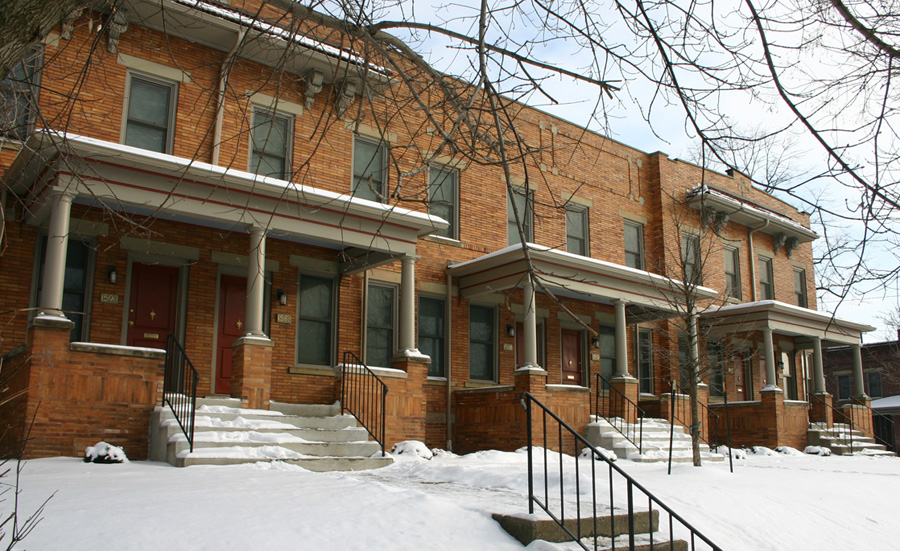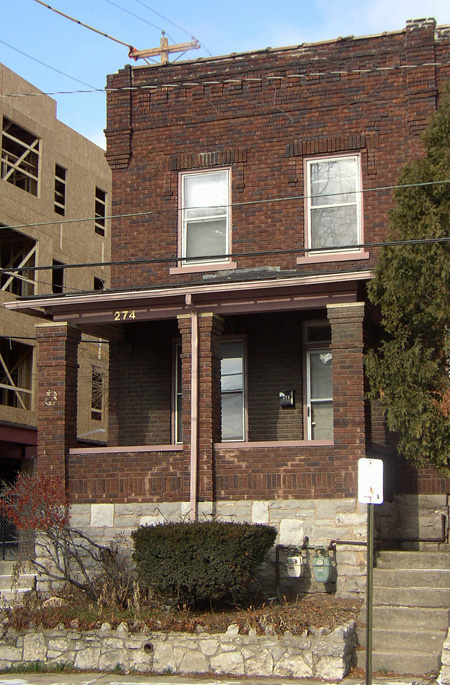COLUMBUS ROWHOUSES Alongside the many, many American Foursquares, numerous bungalows, and occasional Victorian, Colonial Revival, Prairie, and Tudor buildings that comprise the historic housing stock of the University District, there stand the Columbus Rowhouses. This often ignored style is one of the most common forms of housing in the University District. Rowhouses are so numerous and so widespread that our neighborhood would be unrecognizable without them. There is scarcely a street in the University District that doesn't feature at least one rowhouse. |
||
|
||
There is some variety in the particular features of rowhouses but all share certain basic attributes. Columbus Rowhouses have the following features:
The photo at right of 274 Chittenden Ave., an end unit in a four-unit building built in 1917, shows all of the classic features of a Columbus Rowhouse. The classic Columbus Rowhouse achieves a graceful transition from street to building and from public to private. Instead of crowding the street, the rowhouse moves back from it in steps. There is the sidewalk, then the small front yard or embankment, then the open porch, then the building itself. The sidewalk is open and public. The front yard is open but slightly less public. The front porch is open but semi-private. The building itself is mostly closed and private. |
|
|
Older rowhouses (pre-1915) tend to be a bit plainer than later ones. They also tend to forgo the front yard and perhaps even the porch and come right up to the sidewalk. Some rowhouses add a second story porch on top of the first floor porch. While most rowhouse units are two story, some rowhouses blur the line between rowhouse and apartment building and house separate units on the first and second floors. Rowhouses in the University District usually face the street but sometimes are perpendicular to the street and face another block of rowhouses across a small courtyard. Alhambra Court (2180-94 N. High), Duplex Court (N. 4th), University Place (1644 N. High) are surviving examples of this. |
||
|
||


